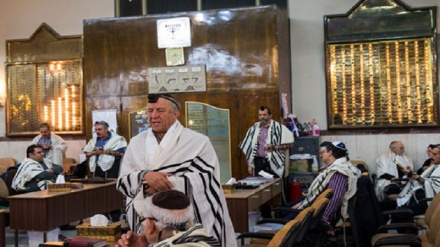Iran, land of various ethnicities (26)
As you may know, Iran has been the land of literature and literary figures since very old times. Among these literary figures the status of poets is very significance. One of these great poets is Abul Qasem Ferdowsi. Ferdowsi has gained global fame for his magnum opus, Shahnameh. Stay tuned to get more familiar with Ferdowsi and the status of Shahnameh among Iranians.
Abul Qasem Ferdowsi was born in 329 AH around Tus in Greater Khorasan which was very much vaster than modern day Khorasan. His father was a rich and renowned farmer. In the first years of his life, the young Ferdwosi felt no financial gap in life but later on he lost the properties he had got from his father and became poor.
In the prime of youth he started reading old stories and embarked on gathering the history and information of the ancient Iran. This was a precursor for compiling an epic work on the events of the past. He has said in Shahnameh (the book of kings) that he spent 30 years to compile this literary masterpiece.
Shahnameh is a book which contains life, death, love, hatred, tragedy, happiness, misery, fraud, treason, loyalty, history, myth and so on. In describing Iran, Ferdowsi doesn’t pay attention to a specific ethnicity. He praises the entire Iran. He speaks of various cities and regions such as Mazandaran, Fars, Isfahan, Khorasan etc. The aim of Ferdowsi is to connect all Iranians and make a national unity. Ferdowsi promotes and extols positive attributes and vehemently criticizes those countries or persons which intend to violate Iran’s territorial integrity and national solidarity.
Abul Qasem Ferdowsi tries to discover the Iranian identity from the depths of history and put it before the eyes of humanity. Ferdowsi doesn’t look at Iran merely as a geographical entity but he beholds Iran’s culture, civilization, spirituality, traditions and the like. This paragon of epic poets was a devotee of the Prophet of Islam and his infallible progeny.
He says:
If you dislike this, it is my sin
This is my creed and way
With this I was born and with this I’ll die
Know that I am the dust of Heidar’s feet
As you might know Heidar is the epithet of the first infallible successor of the Prophet of Islam, Imam Ali (AS).
Ferdowsi has blended the Iranian culture with the rich Islamic culture in his magnum opus. Shahnameh is indeed a document of the ancient Iranian culture and a great resource of Farsi language and vocabulary.
Shahnameh consists of approximately 60.000 lines and covers three phases of mythology, heroism and history.
Ferdowsi is an advocate of good against evil. Most of the stories of his epic book remind the reader of the mortality of this world. Imagery has a significant status in Shahnameh. However, Ferdowsi uses this literary tool in a simple and palpable way. He tries to visualize the events for the reader. The name of Abul Qasem Ferdowsi has been intermingled with the name of Iran and it is impossible for a person to study the history and culture of Iran without knowing the name of Ferdowsi. Ferdowsi is alive just as Iran is alive. Ferdowsi is not just the pride of the Iranian nation but a pride of the entire mankind.
RM/ME


